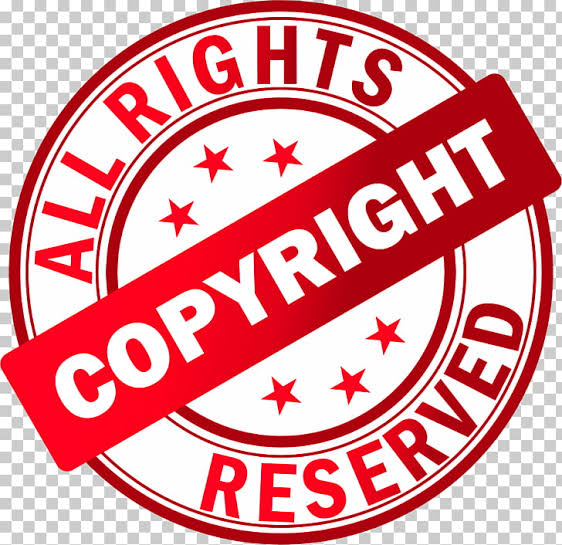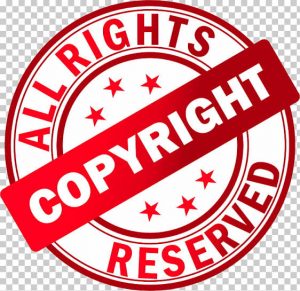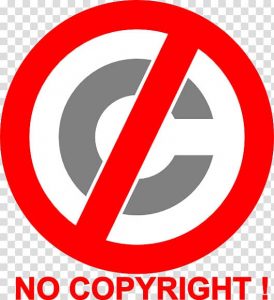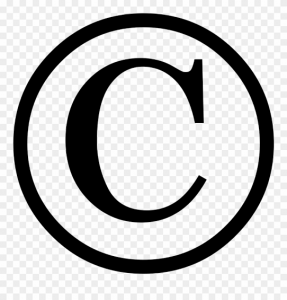
Copyright Issues in Social Media
By: Arpita Goyal
Social Media has increased its base significantly in the past few years. Millions of people, majorly the young generation use it extensively. Social Media platforms not only help people to expand their connections all around the world but also allow them to freely share their ideas and contents with large amount of people in fraction of seconds. It could be used widely by businesses as it can help them to increase their market reach. However the users must be careful while using social media and its content. The content posted on social media is easily accessible by people and due to this it is seen that people tend to copy the ideas and material posted online for their use without taking any permissions. However it must be understood that it doesn’t mean that if something is posted online then it is free for use. Material posted online too can be copyrighted. Thus copying material from social media can lead to copyright issues.

What is Copyright?
Copyright is an intellectual property right given to the author for his creations. It can be given to Author of a written work, Photographer who took the picture, Composer of a song or melody, Videographer of a video, Journal/publisher of a published work, Creator of artwork, Programmer of software, and Employer of any of these people if the work was done in connection with their employment.
Copyright process is easy and simplified for traditional works like books, plays, movies, etc. But due to the advent of social media the process of copyright has grown complex. The complexity of copyright law is due to the following characteristics of Social Media:
1. Ease of Reproduction: Content posted online on social media platforms can be easily reproduced in no time and without losing quality of the content. Due to this factor the content can be easily copied and reused and people would not be able to recognise if it is real or copied.
2. Ease of dissemination: Content posted on social media could be easily shared due to which in a very short time the content can go viral. Sometimes the owner of the material don’t want it to be shared on particular sites thus such fast dissemination could lead to copyright issues.
3. Ease of Storage: The content posted on social media could be easily stored. Thus even if the owner removes his content so that people no longer can access it, people will still have access to the material and it could be reposted by them.

Copyright and Social Media
Social Media allows to post and share material with the world freely. It provides free and easy access to material posted by people. Anyone can easily save, reproduce, use, or share the material online. However this can lead to various copyright issues as the posting material on social media sites don’t mean that they are in public domain and can be used by anyone. The social media sites allow users to post copyrighted material. However these sites don’t own the material and the copyright of the material remains with the owner of the material. Social Media sites enter into an agreement for Intellectual Property License with the users in return of allowing them to post material on their sites. This agreement provides a worldwide, non-exclusive, royalty-free license (with the right to sublicense) to use, copy, reproduce, process, adapt, modify, publish, transmit, display and distribute such Content in any and all media or distribution methods to the Social Media sites. Social Media sites like Facebook, Twitter, Instagram, etc. all have different IP license agreement terms but all these agreements identifies that the copyright of the content resides with the owner only. Such agreements are only for proper functioning of the social media platforms. However the copyright of the material remains with the owner of the content and such agreement is only with the social media platform and not with its users. Thus a user cannot copy the material posted on social media and one needs to be careful while sharing or using the content such that it doesn’t lead to copyright infringement.
However sharing, reposting, etc. not always gives rise to copyright infringements. So how do we decide as to what extent of sharing do not amount to copyright infringement? This is decided on the basis of fair and unfair use of intellectual property. The Copyright Act, 1957 provides for conditions when use of the copyrighted material doesn’t lead to infringement of copyright. Sections 51 and 52 of the act deals with the acts that would lead to infringement and that would not lead to infringement respectively. The provisions are formulated on the basis of doctrine of fair use, thus if an act is considered to be a fair use of the intellectual property then it would not amount to infringement of copyright but if the act is an unfair use of the intellectual property then it would lead to infringement of copyright. Use is likely fair if:
• Character of the use is nonprofit, educational, or personal
• Nature of the material used is factual published material
• Only a small amount of the material will be posted
• Impact on the market for the material is very small
Use is likely not fair if:
• Character of the use is commercial (promoting a product or service, charging to access the copyrighted material, advertisements)
• Nature of the material used is imaginative and/or unpublished
• The majority of the material will be posted (for example, an entire book or chapter instead of a quoted sentence)
• Use detrimentally impacts the market for the original
• Use was “fair” at one time, but has been repeatedly reused or more widely distributed, or the copyright owner has requested that the use be limited or discontinued. For example, use of a portion of a journal article or a photo may have been Fair Use one time, but used annually for the same event or purpose, loses its Fair Use character .
Courts examine the facts of each case to determine whether the use of the material was fair or not on the basis of the following four factors:
1. the purpose and character of the use, including whether such use is of a commercial nature or is for nonprofit educational purposes;
2. the nature of the copyrighted work;
3. the amount and substantiality of the portion used in relation to the copyrighted work as a whole; and
4. the effect of the use upon the potential market for or value of the copyrighted work.
Each of the factors is analysed individually and a balanced decision is taken by the court considering the effects of each factor. However, the fourth factor regarding the effect of use on the potential market for or value of copyrighted material is a very important factor. Supreme Court also takes into account the extent of “transformation” of the copyrighted material for analyzing the first factor. The more the material is transformed i.e. changed from the original, the less consideration will be given to other factors like commercialism.
1. Presse v. Morel, 10-cv-2730 (AJN), (S.D.N.Y. Aug. 13, 2014)
Daniel Morel took photos of 2010 earthquake in Haiti and Agence France Presse obtained it from Twitter feed of a third party and distributed it further. Daniel Morel brought a suit for infringement of copyright. The court in this case held that terms and conditions of Twitter don’t permit third-parties to remove content from Twitter to post elsewhere and the copyright of the material remains with the owner of the content, thus there was infringement of copyright. The court in this case also discussed that “attribution” of the content don’t discharge the person from being liable for copyright infringement. Courts consider all factors of fair use and then decide accordingly.
2. North Jersey Media Group Inc. v. Fox Network LLC No. 13-7153 (S.D.N.Y. Feb. 10, 2015)
This is an important case that discussed about the boundaries of “transformative use”. In this case there was copyright infringement of a photograph of three firefighter raising an American flag near the ruins of the World Trade Center which was clicked by Thomas Franklin on September 11, 2001 and published by the plaintiff company. Copyright for the same was registered with the U.S. Copyright Office. The defendant company, Fox Network LLC posted an image on its Facebook page for “Justice with Jeanine” television programme that combined a cropped version of plaintiff’s photograph, juxtaposed with classis World War 2 photograph of four U.S. marines raising the American flag on Iwo Jima. A case was filed by the plaintiff for the infringement of copyright to which the defendant contended that their post was protected by doctrine of fair use. However considering all the factors of doctrine of fair use the court denied the defendant’s contention of doctrine of fair use. The court in this case observed that Fox’s alteration of the content and the message of the photograph was minimal and the post didn’t constitute an original idea.
3. Fairmount Hotels Pvt. Ltd. vs. Bhupender Singh (2018)
In this case the defendant posted the images of plaintiff’s hotel on Facebook so that he could attract people to his hotel under the guise of the plaintiff’s pictures. Defendant posted the photographs without permission and authorization of the plaintiff. On the basis of these facts the plaintiff filed a suit for infringement of copyright and sought for injunction. The Hon’ble High Court provided for permanent injunction to the plaintiff and also issued a direction of 50,000 INR cost to be paid to the plaintiff by the defendant.
Ways of Avoiding Copyright Infringements
1. Asking for Permission: Before posting anything which is created by someone else always ask for permission of the creator of the content to post it. Even if you are reposting anything then first find out the owner of the content and ask for the permission.
2. Giving Credits: Most of the creators don’t mind their content being shared but they want to be credited for their work. So while posting someone’s material make sure that you give credits to the creator so that people would know who created the content.
3. Using Un-copyrighted Data: There are various sites which provides for un-copyrighted images and other data at a minimal cost. Use of such data would not lead to copyright issues. Also you can use government data and data that is available on public domain as there is no copyrights on such data.
References
1. https://socialmediahelp4u.com/3-ways-to-avoid-copyright-infringement-when-posting-on-social-media/
2. https://socialmedia.colostate.edu/copyright/
3.https://www.mondaq.com/india/copyright/868718/copyright-act-and-photographs-on-social-media
4.https://www.forbes.com/sites/oliverherzfeld/2016/05/26/fair-use-in-the-age-of-social-media/#4e03b73b3300
5. https://medium.com/swlh/copyright-and-social-media-67338c4c72f5
6. “Copyrights Issues in Digital Media” by Iranna M Shettar
7.https://www.loeb.com/en/insights/publications/2015/02/north-jersey-media-group-inc-v-fox-news-network-__

very informative
great article